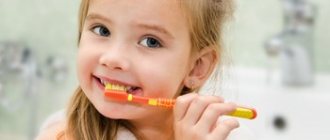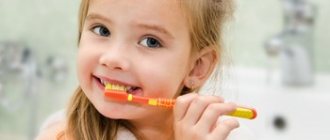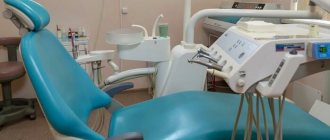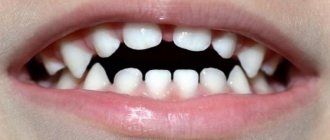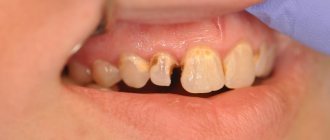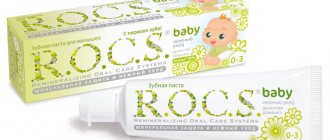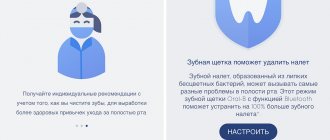A child needs dental services from the first year of his life. As soon as teeth begin to emerge, it is better to immediately show the child to a specialist. A simple inspection would be a great start. Continued regular visits to the dental clinic will help your child maintain healthy teeth for many years to come. He will have a beautiful smile and will not suffer from health problems.
Popular types of x-rays of baby teeth in children
Modern pediatric dentistry allows us to solve any problems with baby teeth. But in order to consider the disease and make a correct diagnosis, it is not enough just the child’s complaints and his description of pain and discomfort. In order for treatment to be as effective as possible, it is necessary to build a treatment plan based on diagnostic data that can be obtained after one of four popular types of radiography:
- Sighting (periapical). Indicated in cases where clarification is necessary on one or more adjacent teeth (from 1 to 3). Provides data about the units themselves, their roots and surrounding soft tissues.
- Occlusal (palatal). As a result, the attending physician receives a complete projection of one of the child’s jaws. The technique is used to determine possible malocclusions and anomalies of the dentition in general.
- Panoramic (orthopantomogram). Allows scanning of the entire oral cavity. An orthopantomogram for children is indicated for a detailed study of pathologies of the upper and lower jaw, the temporomandibular joint and the maxillary sinuses. The results of such an x-ray are necessary for further dental correction. This type of examination is prescribed for children with a fully formed dental system, that is, from about 9 years old.
- 3D pictures. A three-dimensional X-ray image of children's primary teeth allows us to obtain data on all units (existing and not yet erupted). The entire maxillofacial area is subject to examination. The photographs can be used to evaluate the structure of the entire skeletal system of the jaws, the condition of the root system (including pathologies), inflammation in soft tissues, etc. Such dental x-rays are prescribed for the purpose of making a diagnosis and as a control study after canal filling.
Depending on the existing problems with baby teeth, the child may be prescribed one specific or several different types of examination. The attending physician will definitely explain the advisability of obtaining images and the need for x-rays.
You might be interested in:
Dental diagnostics
Pediatric orthopantomogram
3D image of teeth
Signs of good pediatric dentistry
- availability of an appropriate license,
- the children's department should not communicate with adult rooms,
- comfortable environment: the atmosphere should be conducive to treatment - the child should not be scared, but, on the contrary, it should be interesting and pleasant to be in the clinic. It is desirable to have a separate children's area with the opportunity to watch cartoons and a games room, which will brighten up the wait for the appointment and relax after the treatment. A number of clinics also provide a TV installed directly in the office - during dental treatment, a child can be distracted by watching cartoons,
Successful design of a children's dental office
- pleasant doctors: comfortable dental treatment largely depends not so much on the environment, but on the dentist himself. It is important that the dentist is not only a professional, but also partly a psychologist, because you will have to find an approach to each child. For girls, it is recommended to choose a woman doctor, for boys - a man, since the doctor will be able to talk with his patient on “women’s topics” or discuss new products in the automobile industry. It’s good if the dentist tells his patients how the treatment is going, and composes a fascinating tale about teeth. And no violence! If your child doesn’t want to have their teeth treated today, it’s worth trying again in 2-3 days (of course, if the issue is not urgent),
- modern equipment: the clinic should not have outdated equipment. Drills that make a scary and loud sound frighten even adults. Therefore, instruments and equipment for treatment must be new,
- the possibility of using gentle treatment methods: an additional advantage in favor of the clinic is that the rooms are equipped with high-tech equipment, for example, a laser, which will allow the removal of carious cavities without drilling, that is, a gentle and less painful method for the child. A big plus will also be the availability of drugs and equipment for minimally invasive treatment of caries using the Icon system without a drill,
- availability of safe and high-quality anesthesia: for dental treatment in children, local anesthetics should be used, if possible also nitrous oxide or xenon, which have a sedative effect and allow small patients to get rid of panic and fear. Local anesthetics should be intended specifically for children, they should not contain epiniphrine (or a minimum dose),
Sedation in the treatment of childhood caries
- the possibility of carrying out preventive procedures: silvering of teeth, fissure sealing, fluoridation - these are effective means of protecting both milk and permanent teeth from caries. Therefore, in the clinic where you plan to treat your baby’s teeth, doctors must be able to implement preventive care,
Silvering of teeth in a child
- chairs for different ages: this is not a mandatory condition, but desirable, since manufacturers have separate dental chairs for small patients up to 3-5 years old, in which they will be much more comfortable than in adults,
- convenient location: dentistry should be located near the house or in close proximity to a metro station, and have its own parking lot. There is a very high probability that your baby’s mood will deteriorate sharply after treatment, so you will need to get home as quickly as possible.
Before choosing pediatric dentistry, especially if non-emergency and urgent treatment is required, we recommend thoroughly studying the information about the clinics. Be sure to study the reviews, attend several free consultations - let your child get acquainted with the clinic’s environment, look into the offices, talk to the doctor, and even say which of the clinics and which doctor he liked the most.
When is a child's dental x-ray prescribed?
It is important for parents to understand in what cases it is necessary to take an x-ray of children’s baby teeth. Detailed diagnostics may be required in a variety of cases (depending on the individual characteristics of the structure and development of the dental system). Most often, radiographic examinations are prescribed in the following cases:
- To identify deep caries. Milk teeth, unlike permanent teeth, have more fragile enamel. Consequently, they are more susceptible to exposure to aggressive substances that enter the mouth with food. Carbonated drinks, fast food, sweets - all this causes the appearance of caries, which is not always noticeable upon visual inspection. At routine visits to the dentist, with x-rays, you can verify the absence or confirm the presence of deep caries.
- To study abnormalities in the development of teeth and jaws. If a child has problems with teething, abnormal growth, or pain when closing the jaws, this may be a reason to take an X-ray of the children’s baby teeth. The results will allow us to study the existing problems in detail and intervene in a timely manner, solving issues of delayed growth of units and many others.
- To monitor the condition of permanent teeth. Not only baby teeth, but also permanent children’s teeth require special attention even before they appear. Studying the rudiments allows not only to determine possible anomalies, but also to make predictions about the timing of eruption.
- Bite study. An incorrect bite can cause premature tooth wear and the appearance of various pathologies. An X-ray of a child’s teeth can provide detailed data on the position of the jaws in order to identify even the slightest deviations from the norm.
- Detection of abscesses. Inflammatory processes in the initial stages may be asymptomatic. An advanced abscess can cause serious operations, including surgical ones. At the same time, x-rays can show foci of inflammation and begin treatment on time.
Some children are so mobile and active that they often get injured, including in the jaw. Serious injuries may be visible during visual inspection, and some cracks and misalignments can only be diagnosed after X-raying the child's teeth.
When should you take your child to the dentist?
Paid pediatric dentistry is currently the best solution for a child’s first visit to a doctor. And you definitely need the best pediatric dentistry in Tula. The best experts are concentrated in the regional center.
You can go to the website of pediatric dentistry to get acquainted with the cost of services, and, more importantly, find out about the qualifications of the doctors working there. Well, you need to dial the telephone number of pediatric dentistry if one of the following situations occurs.
- During the first eruption of baby teeth. Carrying out the first examination is important for the normal development of the dental system. Timely diagnosis will allow you to immediately begin eliminating possible anomalies.
- When a child learns to use hygiene products independently. A specialist will do a better job of training him and selecting a brush and paste.
- If a child has not been seen by a dentist for more than six months, it makes sense to go for an examination.
- Complaints of pain in the teeth when eating, eating hot, cold, sweet or sour.
- When baby teeth begin to fall out. The dentist can predict the direction of growth of permanent teeth.
- The presence of even small caries is an urgent reason to go to the dentist.
- For plastic surgery of the frenulum of the lips or tongue.
Adults are often mistaken in believing that baby teeth are temporary, and therefore their health can be neglected. In fact, they significantly influence the further development of the dental system. Besides, why make a child suffer from tooth decay?
Pediatric dentistry, the address of which you can find on our website, is always ready to provide you with the best specialists in the field of pediatric dentistry.
Make an appointment to get a consultation and undergo a full diagnosis. Make an appointment
Answers to frequently asked questions about x-rays of baby teeth in children
We offer expert answers from specialists from the Smile Factor network of clinics to frequently asked questions by parents.
Can an x-ray be prescribed to a child “just in case”?
Unfounded medical (and dental) research is prohibited by SanPiN.
But, most often, diagnosis according to indications is at the discretion of the attending physician. Any parent can ask clarifying questions and learn more about the assigned test and what it is for. What is better - 2D or 3D scanning result?
It all depends on the goals of the diagnosis.
In some cases, a 2D image is sufficient, while in others a CBCT scan is required to obtain a 3D image. Taking into account how CT scans of the jaw and teeth are done, the procedure is not much different from a simple x-ray in terms of safety and is indicated for obtaining more extensive data about the child’s dental system in the images. Are x-rays harmful to a child?
Modern X-ray machines (and most often these are ultra-modern tomographs) produce the minimum possible radiation dose during operation, which does not cause any harm to the child’s body. To achieve the maximum recommended radiation exposure of 1000 µSv per year, a child needs to undergo about 400 x-ray examinations. It becomes clear that so much research is simply not needed. And the radiation that a baby receives during a CT scan is equal to what he receives after a week of watching TV.
Read also
What to do if your tooth aches
Sometimes aching pain in a tooth can appear for no apparent reason at first glance.
Why do teeth crumble?
Tooth decay in general, and crumbling in particular, is not an aesthetic problem.
